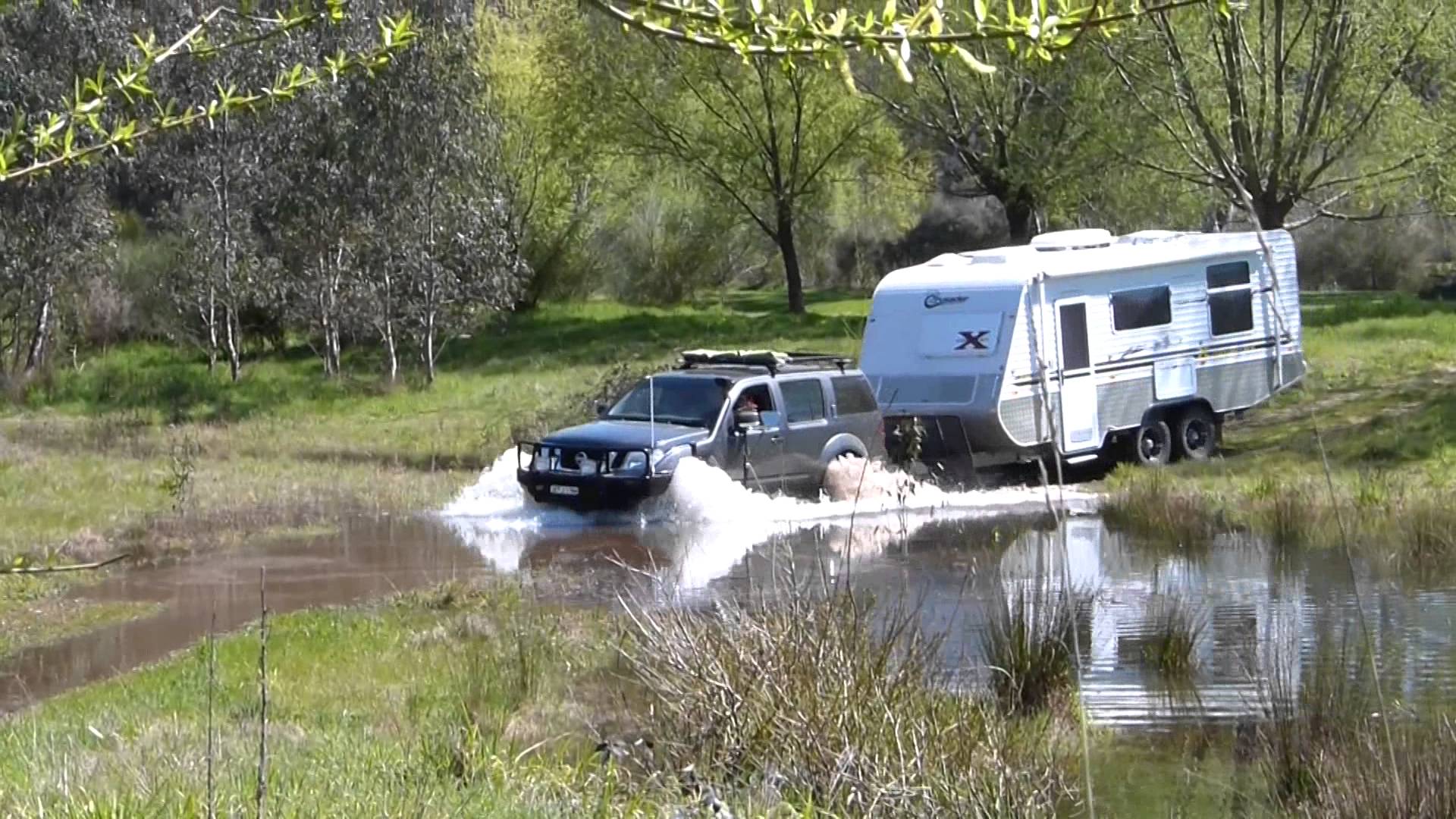If you are a camping lover, you might have come across a water stream on one of those adventurous off-road caravanning trips in the outback. Well, if you haven’t, you might come across one, in future and no, you wouldn’t have to create a Noah’s Ark, yet, you would have to cross the water stream safely with your camping trailer.

There are a few tips you need to consider to cross a low-water crossing with your 4WD.
The first thing you need to do before driving in the water is to halt for some time. Engines get hot and hot engines meeting cold water could be disastrous. The main reason being the quick temperature fluctuation that may lead to damaging brakes, breaking of the cooling fan and other possible breakdowns.
After you have cooled down, get down of the vehicle to check the depth of the water stream. Although water streams are shallow enough to let your 4WD/caravan pass through, yet you never know. Also, testing waters by yourselves tell you a lot about the waterbed, if there are boulders which could dent the bottom of your vehicle. Make sure you don’t get into the water which is not safe, keep looking for signposts for crocs and other aquatic perils.
Getting down in the water stream, doesn’t only helps you in checking for the depth and boulders but also lets you mark your line across the stream if you go all the way ahead. We recommend you to cross the stream, marking a line on the water stream which would be an imaginary guiding trail to cross the stream.
Finally, when you are crossing a low-water stream, you should always drive on a lower gear. Low gears give you maximum torque especially when you are crossing a moving water stream. There is a good amount of drag (although not head-on) by the water which requires a good push through with a little bow wave. Low gears also help in keeping the engine running, as it is very important while crossing the stream. Finally, Low gears keep you at low speed which in turn does not create splashes.
We hope the above tips would be helpful for you to cross a low-water stream on your next off-road camping trip.

There are a few tips you need to consider to cross a low-water crossing with your 4WD.
Cool Down Your Caravan
The first thing you need to do before driving in the water is to halt for some time. Engines get hot and hot engines meeting cold water could be disastrous. The main reason being the quick temperature fluctuation that may lead to damaging brakes, breaking of the cooling fan and other possible breakdowns.
Test the Waters
After you have cooled down, get down of the vehicle to check the depth of the water stream. Although water streams are shallow enough to let your 4WD/caravan pass through, yet you never know. Also, testing waters by yourselves tell you a lot about the waterbed, if there are boulders which could dent the bottom of your vehicle. Make sure you don’t get into the water which is not safe, keep looking for signposts for crocs and other aquatic perils.
Line
Getting down in the water stream, doesn’t only helps you in checking for the depth and boulders but also lets you mark your line across the stream if you go all the way ahead. We recommend you to cross the stream, marking a line on the water stream which would be an imaginary guiding trail to cross the stream.
Gear
Finally, when you are crossing a low-water stream, you should always drive on a lower gear. Low gears give you maximum torque especially when you are crossing a moving water stream. There is a good amount of drag (although not head-on) by the water which requires a good push through with a little bow wave. Low gears also help in keeping the engine running, as it is very important while crossing the stream. Finally, Low gears keep you at low speed which in turn does not create splashes.
We hope the above tips would be helpful for you to cross a low-water stream on your next off-road camping trip.



